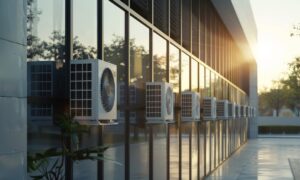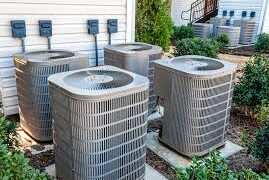As the world continues to experience more extreme weather conditions, ensuring comfort and safety during harsh climate conditions is paramount. Whether it’s the scorching summer heat or extreme winter conditions, climate control technology has made outstanding strides in keeping homes, offices, and public spaces optimized for safe and comfortable living. Industry experts from Provincial Smart Home Services will share eight expert-approved extreme weather climate control tips to help you stay comfortable and safe during extreme weather conditions.
Install a Programmable Thermostat:
One of the best climate control technologies is a programmable thermostat. This technology allows you to customize the temperature according to your schedule, lifestyle, and preferences. Setting the thermostat to regulate the temperature when you are active in your home can save considerable energy.
In hot weather, you should adjust the thermostat at least 7-10 degrees higher when you are away from home to reduce cooling costs. In colder weather, you should adjust the thermostat to 68 degrees when awake and lower when asleep or away from home.
Get Regular Maintenance for HVAC Equipment:
To ensure that your HVACs, including air conditioning systems, furnaces, boilers, and heat pumps, work effectively, it’s recommended to schedule routine maintenance by a licensed technician. Regular maintenance involves inspecting, cleaning, lubricating, and repairing worn-out equipment parts.
This enhances efficiency, increases lifespan, minimizes energy consumption, and reduces the risk of equipment failures that may lead to dangerous carbon monoxide leaks.
Use Curtains and Blinds:
One of the easiest ways to control the temperature in your home or office is by using curtains and blinds.
In summer, using light-colored window curtains, shades, or blinds to reflect the sun’s rays and prevent the interior from overheating is better. On the other hand, darker drapes or honeycomb blinds can be used in the winter to trap heat and keep rooms warmer.
Invest in Ceiling Fans:
Ceiling fans can be utilized in summer and winter to provide maximum comfort. During summer, they create a cool breeze that can help lower the room temperature by up to 10 degrees. In winter, ceiling fans can be reversed to create an upward airflow that redistributes warm air from the ceiling to the rest of the room.
This movement of air helps control temperature equality throughout the room. Additionally, ceiling fans are more energy-efficient than air conditioners and heaters, making them a cost-effective option for extreme weather climate control.
Seal Air Leaks:
Air leaks around doors, windows, and other openings can cause your HVAC equipment to work harder in regulating indoor temperature. Sealing these leaks with caulk or weatherstripping helps maintain a comfortable temperature, reduces energy consumption, and lowers utility bills.
Invest in Proper Insulation:
If you live in extreme hot or cold weather conditions, ensuring your home or office has the proper insulation to retain the desired temperature and improve energy efficiency is crucial. Proper insulation helps reduce energy consumption, lowers heating and cooling costs, and enhances comfort. It’s recommended to insulate the walls, ceiling, roof, and floors with materials such as fiberglass, spray foam, or cellulose.
For example, insulating the attic in hot climates can prevent heat gain and keep the rest of the house cool. In cold climates, insulation can help trap heat inside the home and prevent it from escaping.
Monitor Humidity Levels:
High humidity can cause health issues such as asthma, allergies, and damage to sensitive materials like artwork or books in your home or office. On the other hand, low moisture levels can cause dryness, cracked skin, and nasal congestion. It’s essential to monitor and control humidity levels using a hygrometer, air humidifier, or dehumidifier. A comfortable indoor humidity level ranges from 30-50%.
Another way to control humidity levels is by using plants. Certain indoor plants, such as the Boston fern, peace lily, and English ivy, act as natural humidifiers and help balance moisture levels in your home or office.
Prepare for Power Outages:
Extreme weather conditions can cause power outages in your home or community. It’s recommended to be prepared with alternative power sources such as a standby generator or solar panels. This will ensure you stay comfortable and safe during power outages by powering essential devices such as HVACs, refrigerators, lights, and communication devices.
In addition to these expert-approved extreme weather climate control tips, it’s crucial to regularly check and replace air filters, seal any air leaks in your home or office, and avoid using heat-generating appliances during the day in hot weather. By implementing these tips, you can stay comfortable and safe during extreme weather conditions while reducing energy consumption and costs.
Final Thoughts
Extreme weather conditions can be dangerous and uncomfortable, but with these expert-approved tips, you can ensure your home or office stays comfortable and safe. Installing a programmable thermostat, scheduling regular maintenance for your HVAC equipment, using curtains and blinds, investing in ceiling fans, sealing air leaks, proper insulation, monitoring humidity levels, and preparing for power outages are some of the top extreme weather climate control tips to consider. These tips will reduce energy consumption, prolong equipment life, enhance comfort, and reduce the risk of health hazards. Contact Provincial Smart Home Services for professional guidance and installation of climate control technology to ensure optimal comfort and safety in your home or office.



































